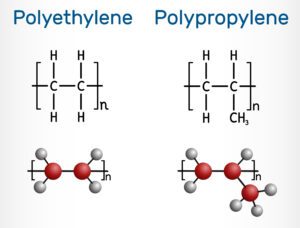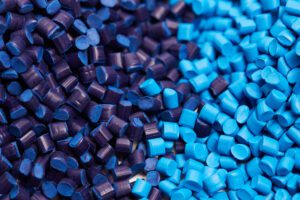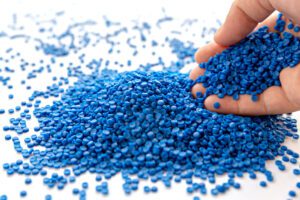 Polyethylene vs Polypropylene: What’s the Difference?
Polyethylene vs Polypropylene: What’s the Difference?
Polymer plastics — like polyethylene and polypropylene — are widely used in packaging due to their ability to preserve freshness, prevent contamination and extend shelf life. Both materials are synthetic polymers, meaning they are composed of large molecules formed by repeating structural units called monomers, linked together through a process known as polymerization.
While polyethylene and polypropylene share similarities, their differences make them uniquely suited for specific applications. Let’s take a closer look:
Polyethylene (PE)
- Composition and Structure: Polyethylene is made from ethylene monomers. Its molecular structure provides flexibility, toughness and resistance to moisture.
- Applications: PE is commonly used for plastic bags, bottles and films. It’s ideal for products requiring durability and moisture protection.
- Key Properties: Lightweight, flexible and resistant to chemicals — making it versatile across industries.
Polypropylene (PP)
- Composition and Structure: Polypropylene is synthesized from propylene monomers. Its structure is more rigid and crystalline than polyethylene.
- Applications: PP is often used for containers, automotive parts and textiles where strength and heat resistance are essential.
- Key Properties: Strong, lightweight and resistant to heat and fatigue — perfect for more demanding uses.
When comparing polyethylene versus polypropylene, the primary differences lie in their flexibility, heat resistance and most common applications. Polyethylene is more flexible and less rigid, making it an excellent choice for products like plastic bags and films that require durability and moisture protection. On the other hand, polypropylene is stiffer and has a higher melting point, making it ideal for high-temperature applications and products that demand structural integrity, such as automotive parts and rigid containers. These distinctions emphasize the unique strengths of polyethylene versus polypropylene and their suitability for specific uses.
Understanding these differences helps ensure the right material is used for the right purpose, optimizing performance and cost-efficiency. Whether you need flexibility, strength or heat resistance — knowing how polyethylene and polypropylene differ is critical to making the best choice for your needs.
What is polyethylene?
Polyethylene is a widely used polymer composed of ethylene molecules arranged in repeating units [-CH2CH2-]. As a thermoplastic, it softens when heated and hardens when cooled, making it incredibly versatile. Its physical properties — flexibility, strength and durability — depend largely on its molecular weight and density. Common types of polyethylene include High-Density Polyethylene (HDPE), Medium-Density Polyethylene (MDPE) and Low-Density Polyethylene (LDPE).
MDI specializes in manufacturing and extruding polyethylene to create rolls, sheets, trays, totes, bins and boxes. Its benefits include durability, water resistance, high malleability and impact strength, making it suitable for packaging, electrical insulation and use in extreme temperatures. Additionally, polyethylene is lightweight, recyclable and available in varying levels of transparency.
However, its drawbacks include slow degradation, reliance on finite petroleum resources, significant energy consumption during production and a complex recycling process. Despite these challenges, its versatility and functionality make it indispensable across industries.
Applications of Polyethylene
Polyethylene is the most commonly used thermoplastic due to its versatility and durability. Its applications span various industries and are integral to many MDI product offerings, like:
- Food Packaging: Polyethylene’s resistance to water absorption makes it ideal for safe and reliable food packaging. MDI’s custom food packaging solutions provide high-quality options for businesses needing secure storage and transport.
- Consumer Goods: With its strength and stress resistance, polyethylene is perfect for everyday items like totes and storage bins.
- Industrial Packaging: Polyethylene’s high tensile strength makes it a preferred material for durable and long-lasting packaging.
What is polypropylene?

Polypropylene is a rigid thermoplastic polymer composed of propylene monomer units [–CH2(CH3)CH2]. Known for its strength and durability, it’s widely used in manufacturing molded materials. By copolymerizing propylene with ethylene, its elasticity can be enhanced, creating ethylene-propylene rubber. While polypropylene is generally less transparent than polyethylene, it can achieve a translucent appearance by removing pigmentation.
Its density typically falls between that of High-Density Polyethylene (HDPE) and Low-Density Polyethylene (LDPE). However, when exposed to light, it can undergo chain disintegration and oxidation, which raises environmental concerns.
Polypropylene is a versatile and cost-effective material widely used in injection molding and fiber applications. Its benefits include excellent moisture resistance, high flexural strength, chemical and fatigue resistance and electrical insulation properties — making it ideal for packaging materials like hopper bins, boxes, sheets, and custom rigid dividers.
However, it has limitations, including susceptibility to UV degradation, low resistance to chlorinated solvents, difficulty with painting, flammability and limited high-temperature use due to thermal expansion. Despite these drawbacks, polypropylene’s unique combination of strength, durability, and affordability makes it a top choice for many applications.
Applications of Polypropylene
Polypropylene’s versatility makes it ideal for a wide range of applications — offering convenient stacking and nesting, food-grade durability, high-density plastic and reliable protection to reduce damage. Its reusability drives cost savings, while features like moisture control and optional fumigation holes add to its practicality across industries.
- Transport and Storage: Polypropylene’s durability and reusability make it ideal for corrugated plastic containers used in inter-facility goods transfer and warehouse storage. MDI’s solutions are perfect for in-plant stacking, transport and organizing materials efficiently.
- Processing Environments: With its resistance to both hot and cold conditions, polypropylene is commonly used in reusable boxes, sheets and hopper bins for processing facilities.
- Custom Solutions: Polypropylene’s adaptability allows for custom containers tailored to specific needs, such as transporting, displaying, or storing unique products.
Polyethylene vs Polypropylene: Which Is the Best Polymer?

Both polyethylene and polypropylene offer excellent benefits, including flexibility, impact resistance, heat resistance and low toxicity — making them ideal for food containers, signage and other applications. Both are also recyclable, offering an eco-friendly option for businesses focused on sustainability.
At MDI, we specialize in designing and customizing durable, cost-effective plastic solutions tailored to your business needs, from small enterprises to Fortune 500 companies. Contact us today to request a quote and discover how we can help you maximize efficiency and savings with our high-quality plastic products.